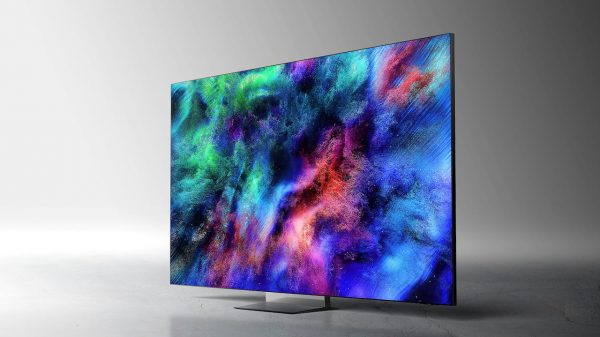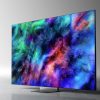As an early cord-cutter, I’ve followed and covered the Over-the-Air (OTA) tuner industry since the early days, even before digital broadcasts. We watched the 2004 Summer Olympics for free in high definition on our Sony ATSC 1.0 OTA DVR and Loewe 38-inch CRT HDTV. And, other than having to sit through Sony’s “Hey, Todd” commercial approximately 1,000 times, seeing the games in such exquisite detail 20 years ago was a revelation.
I’ve never paid for a cable TV subscription and only subscribed to Dish Network temporarily when it was offered to journalists at no charge for review purposes. Living just a few miles from the OTA broadcast towers in Manhattan, I prefer getting my local TV broadcasts for free in their high definition glory thanks to a rooftop antenna and digital tuner. When the Sony DVR finally gave up the ghost, I tried DVRs from Tablo, ChannelMaster, Simple TV and TiVo which all worked pretty well with some caveats. I still use a TiVo Roamio DVR to record weekly network shows like “Survivor” and “The Amazing Race” in high definition.

I was initially excited to hear about the ATSC 3.0 “NextGen TV” roll-out. The new standard for over the air broadcasts can support resolution up to 4K with HDR10 or HLG high dynamic range (HDR) as well as Dolby Digital+ and even Dolby Atmos surround sound. But six years after ATSC 3.0’s launch, New York City still lacked any ATSC 3.0 broadcasts. That changed in September, 2023 when ATSC 3.0 broadcasts went live from antennas atop the new World Trade Center in downtown Manhattan.
At the time, there were no real advantages to switching over from ATSC 1.0 to ATSC 3.0 as most of the ATSC 3.0 channels were simply mirror broadcasts of the ATSC 1.0 channels in identical quality. Also, at that time, DRM (Digital Rights Management) was rearing its ugly head. Several existing ATSC 3.0 tuners started losing access to OTA stations as copyguard measures were implemented on many of the new ATSC 3.0 broadcasts. These issues have been mostly resolved on many of the early ATSC 3.0 tuners, including the ZapperBox.
In order to explore my ATSC 3.0 options, I initially reached out to SiliconDust’s PR team to ask about how they were handling the DRM issues and enquire about the potential for a review of one of their OTA tuners. That company offers ATSC 3.0 tuners and DVRs which were among those directly affected by the DRM changes. But after a decidedly negative interaction with that company, I decided to look elsewhere. With the 2024 Olympics upon us, I reached out to the folks at ZapperBox. And after several delightful conversations with their support folks, I decided to review the ZapperBox M1 Dual Tuner OTA DVR.
Olympics in Better Than High Definition?
While I mentioned earlier that most ATSC 3.0 broadcasts are not yet available in 4K resolution, some broadcasters, like NBC, have implemented a picture quality enhancement even more important than higher resolution, and that’s HDR (High Dynamic Range). HDR broadcasts can take advantage of a wider color gamut than standard definition or even high definition SDR (standard dynamic range) broadcasts. With HDR, colors can be both more accurate and more vivid than you typically see on OTA broadcasts or even on Blu-ray Disc. NBC announced that their coverage of the 2024 Summer Olympics in Paris would be captured and mixed in 1080p resolution with HDR and Dolby Atmos surround sound, and upmixed to 4K/HDR on the USA Network.
I signed up for YouTube TV and NBC’s Peacock with USA Network. I tried using these apps on multiple streaming devices, including a TCL GoogleTV, Amazon FireTV 4K, Roku 4K+ streaming stick and Apple TV 4K. Although some of the devices were able to display the Olympics in 4K resolution with HDR, none of these were able to reproduce the sound in Dolby Atmos surround sound. Most offered regular stereo PCM soundtracks and some were in Dolby Digital 5.1. In all my testing, the only device that was able to reproduce the Dolby Atmos immersive soundtrack in the Olympics was the ZapperBox M1 dual tuner DVR. But I’m getting ahead of myself…
The Set-Up
My review sample of the ZapperBox M1 was one that I borrowed from the inimitable Robert Zohn, owner of Value Electronics. After discussing the ZapperBox at the 2024 TV Shootout with the former broadcast engineer, Robert lent me one to test. To be honest, the initial set-up was a bit wonky. The screen resolution was low, which led to pixelated text that was hard to read. I ran through the entire set-up, including the channel scan and network set-up. At the end of the set-up, the unit found a software update available. And, when I did the update, the unit downloaded and completed the update then led me through the entire set-up process again including the channel scan. But once that completed and the box restarted itself, the on-screen menus looked good (resolution issue solved).
But I wasn’t out of the woods yet. The channel scan only found 39 channels in the New York City area. And while that may seem like a lot, most of those channels were subchannels with fairly low value programming. And none of them were ATSC 3.0. They were only ATSC 1.0. An earlier scan on a Sony BRAVIA 7 TV had identified significantly more channels. I explored a few options: a variable attenuator (in case the signal was too strong), an FM trap and an LTE filter in case FM or cell tower broadcasts were interfering with the ATSC 3.0 signal. Nothing helped.
Eventually I climbed out onto my roof and realized that my antenna had slid down its mast and was no longer pointing at the broadcast towers. In fact, it was now blocked by my chimney. Once I fixed that, I did a re-scan and this time the ZapperBox found 88 channels, including both the ATSC 1.0 and ATSC 3.0 versions of all the major networks. Yay!

Time to Dust Off the Old Rabbit Ears?
In terms of which antenna you should use, that’s going to depend on your proximity to local broadcast towers and how flexible your placement options are. ATSC 1.0 and ATSC 3.0 normally broadcast over UHF bands, but some stations use VHF bands, so you’ll want an antenna that can receive both UHF and VHF frequencies.
In general, it’s best to place your antenna outside, as high as possible, with an unobstructed line-of-sight view of the broadcast towers. But that’s not always feasible. In many metropolitan areas, a simple passive indoor VHF/UHF antenna pointed in the general direction of the towers will be good enough to receive those local channels. But sometimes multipath interference can prevent you from getting a great signal. If you’re more than 70 miles away from the transmitters, don’t bother trying. The curvature of the earth prevents TV broadcast signals from traveling more than about 70 miles, unless the broadcast antennae are on very high towers. Any antenna maker claiming 100, 200 or even 1000 miles of reception is not to be trusted.

I’ve had great results with the Clearstream C2 outdoor antenna from Antennas Direct. It’s relatively compact, fairly attractive and is suitable for indoor or outdoor use. There are versions of the antenna available with and without the rear reflector (the grille behind the loops). The current version the ClearStream 2V is available on Amazon for around $90. If you’re further out from the closest towers, a more directional yagi-style antenna might be preferred. For help in finding out whether ATSC 3.0 is available in your area and what sort of antenna you might need, check rabbitears.info and antennaweb.org. These are older web sites, but they still contain useful information.
With channel setup completed, I tuned into the Olympics on local NBC channel 4-1 and confirmed that I was receiving the Olympics coverage in 1080p resolution with HDR10 and Dolby Atmos surround sound. This was better quality than I could get from a paid subscription to YouTube TV which presented the Olympics opening ceremony in 1080i resolution, with no HDR and 2-channel sound.

Internet or Bust
In addition to scanning for channels, you’ll probably want to connect your ZapperBox to the internet as well. This can be done by plugging in an ethernet cable or connecting via WiFi. Although the ZapperBox M1 fully supports DRM-protected broadcasts and recordings, it currently requires an internet connection to do so. Some may balk at having to connect a free OTA tuner to the internet, but that’s really a sign of the times.
ZapperBox says they are working to implement a DRM solution that can work without an internet connection, but for now, it’s required. An internet connection gets you some additional benefits as well: it allows you to download the 14-day premium guide, download software updates as they become available, watch broadband channels or YouTube, right on the ZapperBox. The ZapperBox can work without an internet connection, but functionality will be limited.
To DVR or Not to DVR
Once I had scanned the local channels and connected to the internet, I was able to access a program guide showing everything available on my local channel line-up. The free version of the program guide includes 24 hours of guide data from local broadcasts. You can also record the show you’re watching or set a manual schedule to record from a particular channel at a particular time with no subscription fees.

If you want to schedule recordings by program or series name, the enhanced DVR feature requires a premium 14-day guide subscription, which is currently $29.99/year ($2.50/month) for up to two ZapperBox devices in a single household. Apparently I was the first to sign up for the enhanced program guide in my zip code, so it took about a day for my guide data to populate. Rather than pre-populate the guide for over 40,000 zip codes, ZapperBox waits for someone to request the guide in a new zip code and then adds the guide data for that zip code in their next daily update. It’s worth noting that the enhanced 14-day guide is currently only available for US zip codes.

In my opinion, $2.50/month for DVR recording that is only limited by the size of your hard drive isn’t bad. In their heyday, TiVo was charging up to $12.99/month for comparable services. But unlike ZapperBox, TiVo did offer a lifetime subscription option for those who don’t like monthly fees.
For storage of those recordings, you can either connect a USB hard drive or plug in a microSD card. 256GB gets you around 75 hours and 1TB gets you about 300 hours of recordings. This will vary depending on the audio and video formats of the shows you choose to record. Standard Definition shows take much less room than High Definition or 4K recordings.
Before you plug in that old USB hard drive you have lying around the house, there are some restrictions. The USB 3.0 port provides 4.5 watts of power and the the USB 2.0 port provides 2.5 watts. Neither of these is enough to power a traditional “spinning HDD” (a magnetic or magneto-optical hard disc drive). But a solid state USB drive like this Samsung will work fine. If you really want to use a spinning HDD, you can connect a powered USB hub between the ZapperBox and the HDD. This will allow the ZapperBox to see the drive. You can also use a microSD card instead.

Once you’ve connected a compatible drive or flash memory card, the unit will recognize it and will offer the option to format the drive for use with the ZapperBox. Keep in mind that this will wipe out any existing files or content on the drive, so don’t format a drive with any important data on it. The minimum drive size ZapperBox requires is 128 Gigabytes.
I connected a 512 GB Samsung Pro Plus microSD card and the ZapperBox recognized and formatted the card in a matter of seconds. When using a spinning HDD or a microSD card, ZapperBox recommends leaving the live TV pause buffer feature at the default 5 minutes, instead of the extended 60-minute pause buffer. If you opt for a solid state hard drive (SSD Drive) or a sufficiently powered spinning HDD you can take advantage of the extended 60-minute pause buffer. The company says the frequent read/write operations of the extended pause buffer can put a bit of strain on a connected drive, but most SSD drives and traditional HDDs are more than up to that task.
Watch and Listen
Getting back to the Olympics, in addition to the vivid and accurate colors, thanks to HDR, I also noticed that motion reproduction was excellent. Swimming, soccer, gymnastics and track and field events include fast moving images. In a standard 1080i HD broadcast, the interlaced signal can cause motion to be jagged, blurry or jerky. In a 60 Hz progressive broadcast (1080p/60) motion is much smoother and more realistic. Whether the athletes were leaping over hurdles, spinning and somersaulting off a springboard or tumbling across a mat, the Olympics events on the ZapperBox offered exceptionally clear motion reproduction.
On other HD content such as episodic TV shows like “NCIS,” “Antiques Roadshow” and even live local news broadcasts, the 1080p signal offered more detail than I’ve ever seen from an OTA broadcast, taking advantage of every pixel on my 4K Epson projector and TCL MiniLED 4K TV. Of course, the quality on standard def broadcasts wasn’t great.
For fun, I watched episodes of “Mad About You,” “Seinfeld” and “Buffy the Vampire Slayer” which were broadcast in standard definition. And these looked about as good as can be expected given the resolution. But they were still fun to watch as a blast from the past.
The Dolby Atmos surround on the Olympics broadcast did indeed decode as Dolby Atmos, but I have to say I didn’t hear much from the surround or height channels: a bit of echo, reverberation and crowd noise capturing the venues, but not much else. NBC appears to have exercised a bit too much restraint in the surround and height channels as it was not as immersive a mix as I would have liked. But I can’t fault the ZapperBox for that. I haven’t found any other OTA programming available in Dolby Atmos, but many shows are broadcast in Dolby Digital 5.1 and many of these offered exceptionally good sound quality with discrete surround sound.

As mentioned above, the ZapperBox M1 automatically includes a 5-minute playback buffer, so you can pause a live recording for up to 5 minutes before it automatically resumes. That’s enough time to pause during a commercial break, get up for a snack or bio break and fast forward through the commercials when you return. Yes, I said FAST FORWARD THROUGH COMMERCIALS. Try that on one of the ad-supported streaming services. Hulu, I’m looking at you. If you connect an external SSD or HDD, you can extend that to up to 60 minutes of buffering before the show resumes.
As with other DVRs, you can tune into a recording before it has completed. You can find the show from the guide, or from the list of DVR recordings. This can allow you to join a show late, skip over commercials and catch up to the live broadcast before it ends. The right button on the remote skips ahead 30 seconds while the left button goes back 10. And you can hold in either button to fast forward or rewind.
Creating a new scheduled recording is pretty intuitive. You can surf through the program guide or search for a program then click the record button on the remote to record just the one show or all episodes in a series. You can select options to record only new episodes or all episodes without recording any duplicates. You can adjust start and end times, which is helpful for events like the Super Bowl or Academy Awards which might run longer than scheduled.

You can edit existing scheduled recordings by clicking on them in the guide or searching for them. And if you just want to delete a scheduled series recording, you can also hit the DVR button on the remote, click the “Series” option, select the show in question and then hit the “Zap” button on the remote to remove the scheduled recording. If you’ve ever used the DVR function on a TiVo, cable or satellite box, you won’t have much trouble getting it to work on a ZapperBox.
It Gets Even More Betterer
One of the reasons I like my 6-year old Tesla Model 3 is that it keeps getting better. Features like Apple Music, Sentry Mode, Auto Park and Full Self-Driving didn’t exist when I bought the car, but were delivered over the years at no additional charge via OTA updates while the car was parked on my driveway. The ZapperBox is similar in that bug fixes and new features and functionality are delivered regularly via over-the-air updates. When DRM encryption was added to ATSC 3.0 broadcasts, it didn’t take long for ZapperBox to add support for these secure broadcasts both for live viewing and for recordings. And that’s just one of the updates the company has made to existing products.
One of the objections that people used to raise about the ZapperBox is that it only works with a single TV, via an HDMI connection. While I was reviewing the unit, the company announced two new products (ZapperBox M2 and M3) which add networking capabilities to their existing tuners and DVRs. An upcoming software release (version 3.0) will allow the M1’s tuners and DVR recordings to be shared and accessed by other ZapperBox client devices, allowing you to view live streams and recordings from the M1 on other TVs in other parts of your home. We’ll follow up with additional information when this is available and we’ve had a chance to test it.
It’s great to see the company working to enhance the functionality of its current products. Out-of-home remote access to live and recorded broadcasts and streaming app support are planned for the future. You can see the ZapperBox roadmap for a glimpse at what the company is planning to deliver this year and beyond.
Pros
- Free access to local broadcasts
- High quality video and audio up to 4K resolution with HDR and Dolby Atmos immersive surround sound
- Free Basic DVR and 24-hour guide
- Low Monthly Fee for enhanced DVR/14-day Guide access
- Can be networked with other ZapperBox units for whole home content sharing (coming soon)
Cons
- Fee required for enhanced DVR features
- Cost of entry slightly higher than some competitive products
- One ZapperBox still required for each TV (for now)
- No remote access (out of home) and no app access to live or recorded content (yet)
The Bottom Line
The ZapperBox M1 dual-tuner ATSC 3.0 DVR offers solid reliability, DRM compatibility and an ever-expanding feature set thanks to over the air updates. Though the purchase price is a bit higher than some competitive products, the 24-hour guide and basic DVR functionality are free and the extended guide with enhanced DVR features only adds $2.50/month ($29.99/year). If you’re within reception distance of local TV antennas and are looking to truly “cut the cord,” the ZapperBox M1 OTA tuner and DVR is an excellent solution for local network channel access.
Where to Buy:
- ZapperBox M1 Tuner/DVR:
- Single Tuner – $224.95 at Amazon
- Dual Tuner – $274.95 at Amazon
For more information: ZapperBox.com
Related Reading:

































Asa
August 27, 2024 at 4:27 pm
Looked up OTA channels available to me and there are only a few channels available and nothing worth watching. I live in the mountains and all the transmitters are too far away. I did review my Dish Network plan and went down the lowest plan + local channels which will save me $30/mo. I would remove it altogether, but my better half still wants a few things.
I’m done with network/MSM TV and stream most things now. With the apps you have on TVs, you can stream most anything. Sports can be streamed for a modest offering per month (best deal via Verizon). Cable/dish-type services days may be numbered. Thanks for highlighting this tech as it saved me some $$ indirectly.
Chris Boylan
August 29, 2024 at 12:44 am
Hey, Asa,
Happy to help! 🙂 I feel your pain as I spend summers in upstate NY around 60 miles from the closest network station broadcast and am also in the mountains so I would probably need a 100 foot mast to get any reception here. But the rest of the year I’m in NYC with loads of OTA choices. I also do a lot of streaming but it’s nice to be able to watch the big live stuff (awards shows, major sporting events) in high quality without any subscription fees.
Hopefully next year ZapperBox will add remote viewing options so I can watch my NYC stations while upstate. Years ago, I had a slingbox for that and was able to watch Michael Phelps win his 8th Gold medal from the NY NBC affiliate broadcast while I was visiting family in Toronto. It would nice to have that option again.
Asa
August 29, 2024 at 3:31 pm
Thanks for the reply and I’ll watch this space for future updates.👍
JOSE E
August 28, 2024 at 5:57 pm
Can live tv ve watched in a running car using a portable setup?
Chris Boylan
August 29, 2024 at 12:45 am
While mobile viewing wasn’t something I tested, I do know that ATSC 3.0 is less susceptible to distortion like multipath interference so it would definitely be possible to watch ATSC 3.0 channels from a zapperbox in a moving vehicle if you had the appropriate mobile power source and a good antenna (and a portable TV of course).
Ian White
August 29, 2024 at 8:07 pm
Chief,
Might be cool in an RV if one was travelling across the country and could lock into some decent signals.
IW
Jim
September 2, 2024 at 12:48 pm
It has a dual tunner, what about a quad tunner and does it have an app. The reason is if you have roku ultra n app on device 2 or 4 tv’s can watch or if app is on phone, tab ect. I know other makers do that, just wondering if zapper does. I know tablo does n they got rid of their 14 day tv guide sub with new devices. I haven’t bought one still checking out options.
Chris Boylan
September 3, 2024 at 12:34 am
A ZapperBox rep told me they have no plans for a quad tuner version, but with an update this fall, ZapperBoxes will be able to share tuners so if you have a dual tuner M1 in one room and another dual tuner M1 in another room, each can access the recordings or live broadcasts from the other – those 4 tuners are shared among any connected ZapperBox devices. They are also releasing a playback only (zero tuner) ZapperBox, the M3, in the fall. That will allow you to access ZapperBox shows recorded on an M1 or M2 from a different TV without the need for an antenna cable in that room.
The Tablo looks like a nice piece but it can’t do ATSC 3.0 (only ATSC 1.0).
ZapperBox also plans to offer offline DRM, remote access and app capabilities in the future. I linked to their Roadmap in the last paragraph before the Pros and Cons.
Bob
August 31, 2024 at 7:29 pm
What is the advantage of multiple tuners?
Chris Boylan
September 3, 2024 at 12:35 am
Multiple tuners allow you to record two shows at once or record one program and watch something else live.
JimBritt
February 24, 2025 at 3:36 pm
OVERPRICED JUNK!
I use TUBLO which requires NO seperate remote, NO “client” boxes for other TVs, and TWO tuners so I can watch other OTA on TVs that don’t have direct connection to my outdoor antenna. I can record shows with NO monthly fee and watch these recordings on ANY TV in my house (I have five). Also, I only paid $50 for my TUBLO device!
Ian White
February 24, 2025 at 8:01 pm
Jim,
Do you mean TABLO? Is it still limited to ATSC 1.0? I know that it works well with the Apple TV.
IW
Chris Boylan
March 30, 2025 at 7:15 pm
I’ve used and tested TABLO tuners in the past. They’re OK for ATSC 1.0 broadcasts but don’t support ATSC 3.0, so no 4K, no HDR, No Dolby Atmos support. ZapperBox supports free DVR recording as well, but if you upgrade to the premium guide ($29.99/year for up to two separate devices), you get more flexible recording, full metadata and content management options.
As for the networking, content sharing and app features, Zapperbox is working on these as noted in their roadmap (linked in the review).